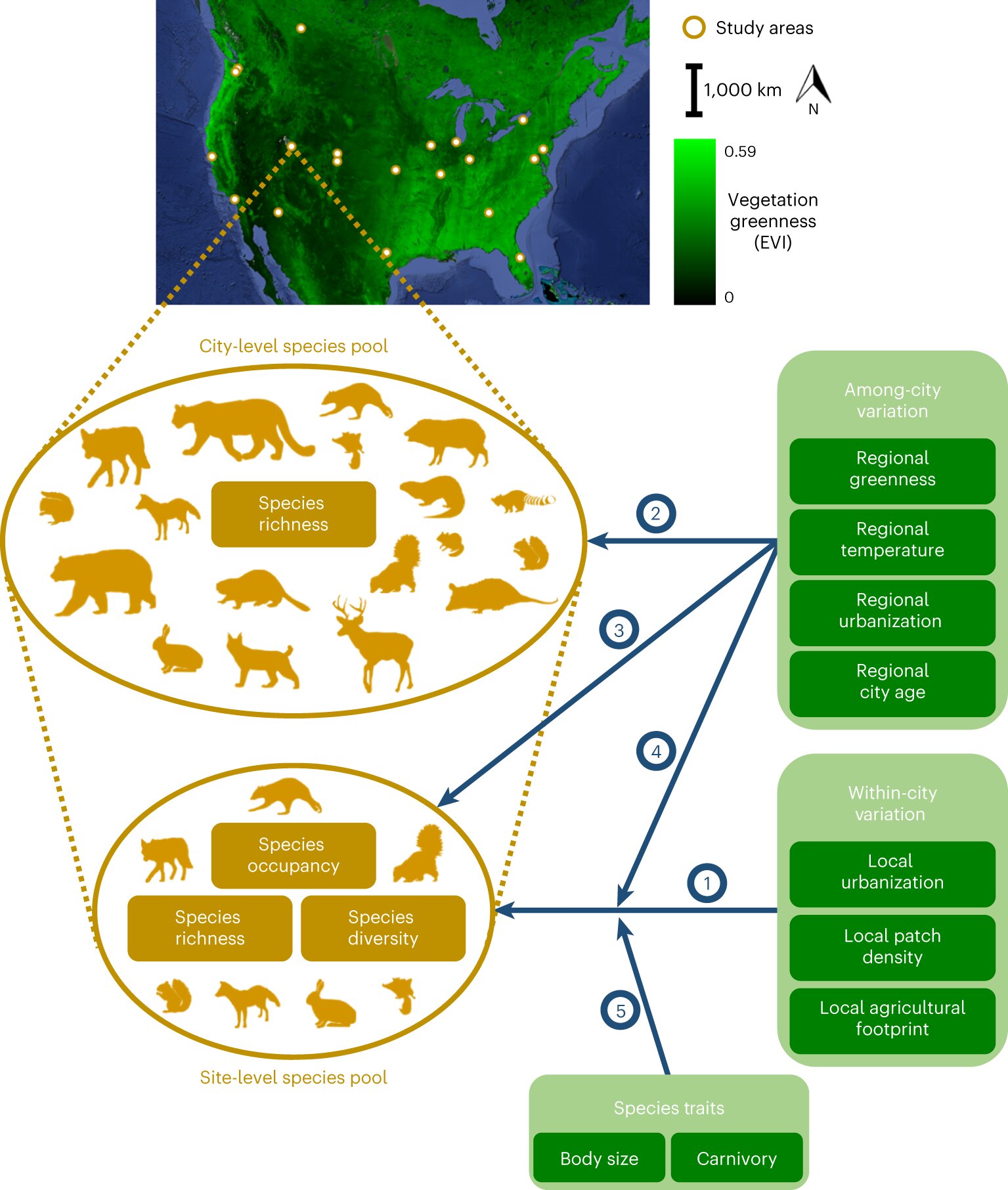Research led by Arizona State University, Tempe, has investigated the interaction between urbanization, species traits, and environmental factors in shaping urban wildlife communities. This research is crucial for effective conservation in the face of urban expansion and climate change.
In a paper titled “Urbanization, climate and species traits shape mammal communities from local to continental scales,” published in Nature Ecology & Evolution, the researchers utilized data from 725 camera-trap sites in 20 North American cities and employed multi-species occupancy modeling to assess the effects of ecoregional characteristics and species traits on the urbanization-diversity relationship. A News & Views article on the research has also been published in the same issue.
The study reveals that urbanization, along with human-driven climate change, has a negative impact on wildlife communities at local scales, leading to a reduction in species occupancy, richness, and diversity. The impact of urbanization varies among cities but is heavily influenced by regional environmental characteristics. Warmer, less vegetated cities experience more severe declines in wildlife diversity.
Mammal identification in camera-trap photos was carried out by trained personnel, including students, faculty, volunteers, and wildlife professionals. While mid-to-large-sized mammal species were well represented, smaller-bodied species were either under-represented or not detected at all, which is a common limitation of camera trapping.
In cities, regional environmental variables have a significant influence on local species occupancy and community composition, surpassing the broader regional species richness. Vegetation greenness, temperature, and surrounding urbanization affect average wildlife occupancy, with warmer, less vegetated cities showing more negative responses.
2023-09-07 04:48:03
Original from phys.org




















